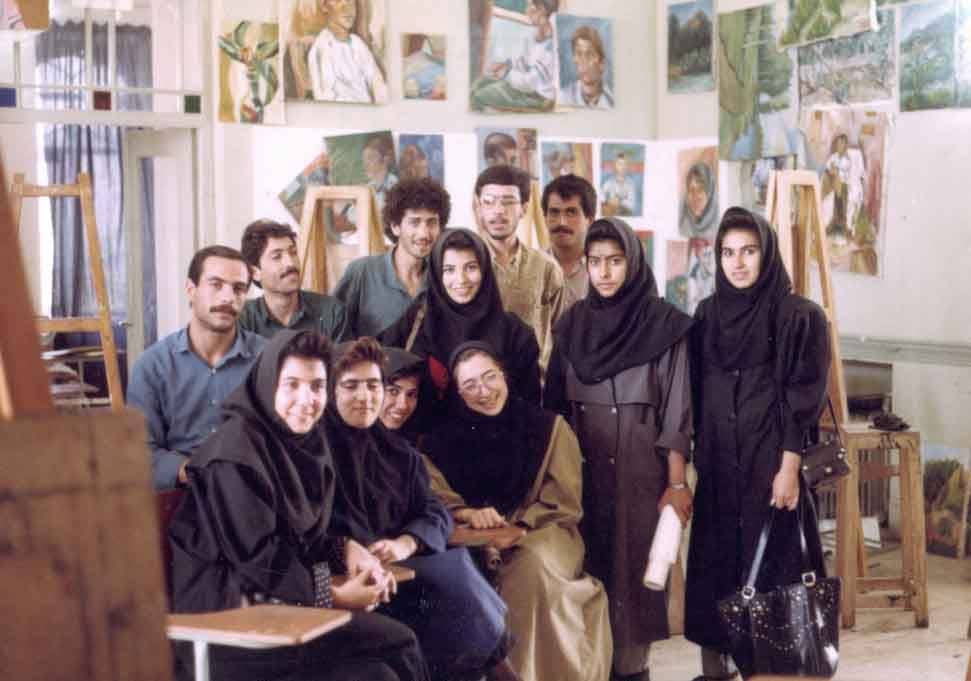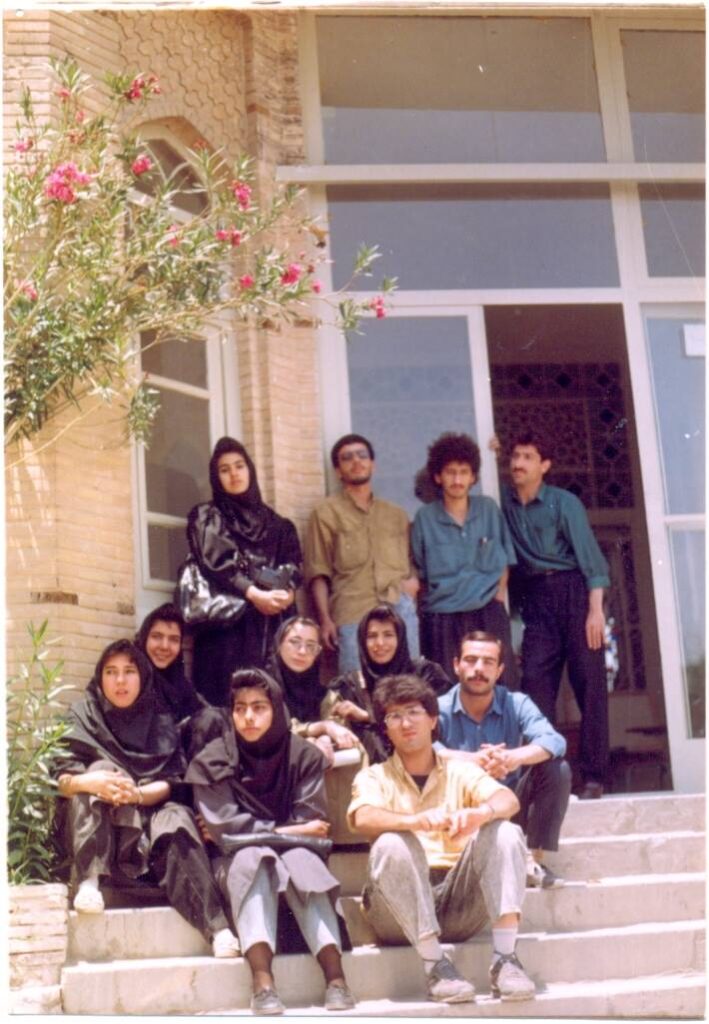Memories with Sara Iravani
My design master

So I decided to write about one of my teachers, Ms. Sara Iravani who is my designer teacher and a wonderful artist. I took her class in 1990. Some of the students were older than her, so it made it easier for us to talk to them. Age didn’t matter; what mattered to all of us was her teaching, her generosity, and her masterful approach to design and illustration. In 1991, a year later, Sara Iravani was awarded the Golden Prize at the International Exhibition of Children’s Book Illustrators in Asia.
She was small in stature, always happy and active. In her class, we learned we had to work at lightning speed, with little time for rest. We would try a variety of designs and techniques and every time we had a workshop, it was always exciting.
My design class always had people working, everyone busy on their project. Sara Iravani didn’t mention a certain amount of designs per week but my friends and I would produce a minimum of six hundred A3 and A2 size designs every week. It turned so prolific that Sara Iravani said, “Just show me your best ones.” So we still made six hundred designs but just brought ten in for class. We congregated on a daily basis at one another’s houses and produced something in the neighbourhood of a hundred designs. More often than not, we met at my place. Sometimes, with Ahmad Menzavi and his motorcycle, we would take our design materials and watercolor paints to the Zayandeh River and work outside on A2 paper. We would toil from four in afternoon until ten at night, undeterred by the darkness or mosquitoes. For many of today’s students, this probably sounds like a story, not a reality. We would buy paper from the “telephon khane” alley in bundles, cut the paper into A2 and A3 sizes and distribute among ourselves.
I was teaching art to children at a few centers at that time and I thought since Sara Iravani had knowledge and experience in children’s art, I can learn from her. She graciously shared her wisdom and knowledge with me. I had become close with Iravani; I even occasionally showed up at her door in Tehran unannounced long after our initial meetings. We also exchanged letters — I would ask my questions in writing. I knew she was much-more-knowledgeable than I, and I had a lot to learn, so I wrote her letters, and she’d respond with incredible patience.
At that time, Iravani and his other professors had a psychological sense of their students, allowing them to provide individualizable guidance about what each one should do according to his or her personality and tendencies. It was a continuation of the teacher-student relationship emphasized by professors such as Mohammad Ibrahim Jafari and Hassan Aghili. They sought new ways to better understand students’ mental tendencies. For example, I remember Farshid Maleki, in Basic Visual Arts class, using squares, triangles, circles and their combinations as instruments to learn about the students’ personalities. He would emphasize that this means was not conclusive, but the viewpoints it pulled back were meaningful to him.
I remember Habibullah Ayatollahi teaching us history. Because Ayatollahi taught at different universities and traveled regularly across Iran, his first course was always lively. However, beyond the second class, the content started to repeat itself. To break out of this monotony, however, I started asking questions of each session, to push him to elaborate more in his answers. None of my friends picked up on my strategy. That’s how we continued for the rest of the semester.
So, there are some types of questioners. Some people ask questions when they already know the answer, just to be able to feel superior over someone. These inquisitors take what others say with a grain of salt and look for errors. In university, I call them “one-book students, who read one book and think they know everything. On the other hand, those who sincerely want answers and listen before they ask. I hope to fall into the latter category and continue to do so

We were all delighted to see Sara Iravani’s photo in Maryam Zandi’s book on artists when she learned that Sara had grown up to become the leading children’s book illustrator, and to see her works in the Tehran Museum of Contemporary Art.
